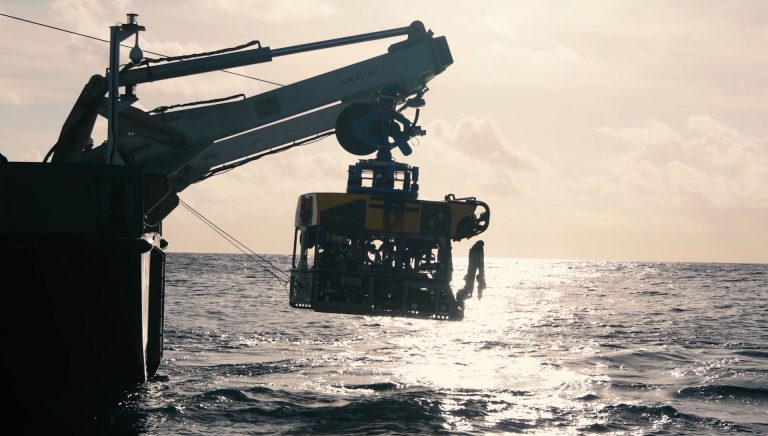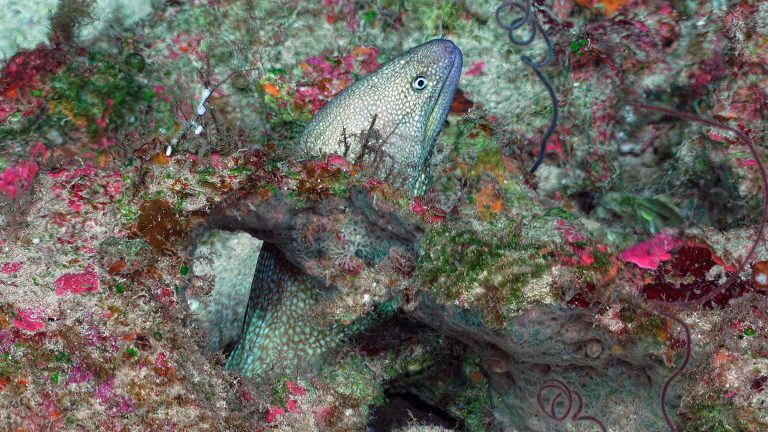In the marine submersible research community, the mantra is often: “Deeper, take me deeper!” This is for good reason: much of the world’s oceans remain unexplored, more so with increasing bottom depth. But equally important is that horizon of ocean just below scuba accessible depths – at 100 to 200m – which likewise hold many secrets and are less frequently explored than sites deeper down.
Overcoming Obstacles
Very deep and very shallow settings both present technological challenges for a submersible, although the challenges differ. At great depth, the issues are mostly about high pressures and navigation. At shallow depth, the issues include strong and variable currents, locations close to shore, marine debris and other potential entanglement hazards (such as cables), high water temperatures (in the tropics), and for Remotely Operated Vehicles, short tether lengths to the ship. Very few full-ocean depth submersible assets are used in these areas, because of these challenges. I have, for instance, joined the Hawaii Undersea Research lab for 20 or so dives in their untethered, manned submersible working on drowned coral reefs in 100 to 200m water. But I am unaware of any group that operates a large ROV system working in these depths, before now.

This past month, Schmidt Ocean Institute bravely allowed me to take their relatively new ROV SuBastian into these challenging depths on our Sea Level Secrets expedition, which was only the second science program for the vehicle. The research was studying Ice Age coral reefs that were drowned by subsequent rising seas to better understand the impacts of sea level change.

I want to tell the story of what these ground-breaking dives involved, and the heroic efforts of both the ROV team and the research vessel Falkor to make the dives so successful. Recall that an ROV is tethered to a ship, piloted remotely from a control room on the support ship while the ship holds position near the vehicle. In shallow water, this means keeping the ship relatively close to the ROV (less than 150-200m apart). Because the two are connected, the ship’s ability to hold station despite winds and currents plays a big role in the ability for the ROV pilots to maneuver the vehicle in the study site and not to be pulled off course by the ship. Ship’s motion (such heaving in surface swells} tend to be translated to the vehicle, complicating operations on the bottom, such as sampling.

Making it Happen
So is it any wonder that on a sunny Hawaiian morning in September 2017, as the SOI ROV team, bridge officers, marine technicians and I looked across the calm seas off the Hawaiian Island of Moloka’I, that some of those faces looked a little anxious? We were sitting over our first dive site, a test site if you will, with just 150m water beneath the ship, looking at 15 kt winds and 1 kt current. “OK, go for it,” says the captain, after being assured by Jason, the ROV team lead and by Jimbo, the lead marine tech, that all the calculations had been made, the maneuvers practiced, and the pilots were ready for the challenge.
And the rest is history. The vehicle and ship performed admirably that day, despite challenging tidal currents. With each successive dive, we covered more ground and achieved more sampling, so that after 5 dives at Penguin Bank, the team was confident we could operate in similar conditions at Palmyra Atoll and Kingman reef. We had great weather throughout the expedition, which contributed to the success (12 dives, >150 rock samples collected, many days’ worth of 4K video).
In the end, Schmidt Ocean Institute demonstrated its capabilities to support high risk/high reward science in a way that thus far, no other large-ROV group has done. This opens a new ocean depth range up to the marine sciences community. Let the exploration begin!

